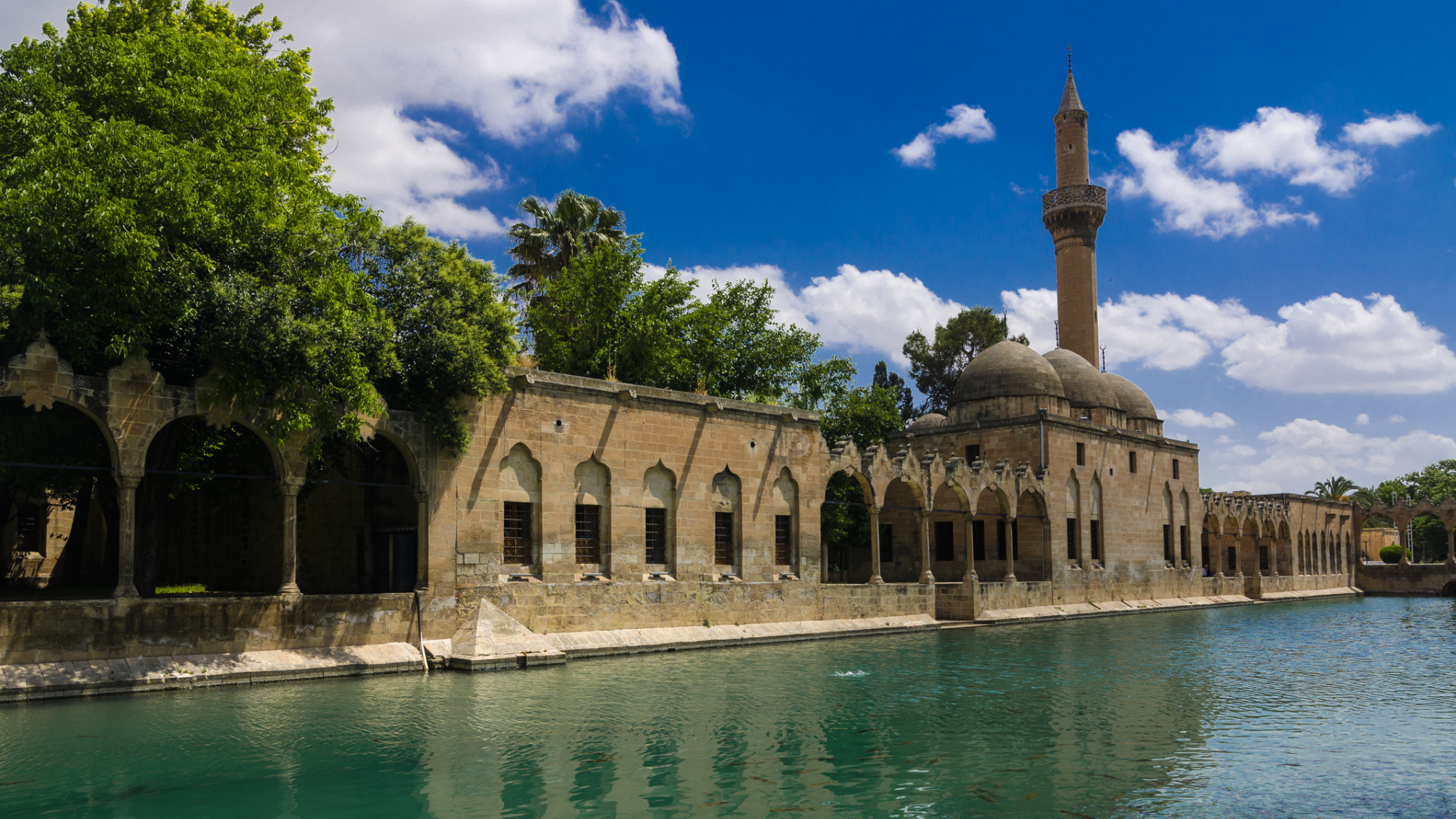A Neolithic marvel in southeast Turkey
A trip to Göbekli Tepe offers visitors the chance to explore nearby Sanlıurfa

Since their discovery in 1995, the Neolithic remains at Göbekli Tepe in southeast Turkey have prompted "a reconsideration of the standard timeline of human civilisation", and spawned "sensational Netflix shows and the woolliest of speculative theories".
Recent discoveries have put paid to some of those, said Barry Yourgrau in The New York Times, but Göbekli Tepe – one of the first known examples of human-made monumental architecture – remains among the world's most important archaeological sites. Dating from about 9400 BC, its round-oval structures are also remarkably beautiful, with their anthropomorphic megaliths and delicate carvings of insects, donkeys and lions. And the trip to see them offers another pleasure, too – the chance to explore the nearby city of Urfa, or Sanlıurfa, which has its own architectural heritage and "vivid food culture".
An important commercial centre since the third century BC, Urfa is a "palimpsest of civilisations", from the Aramaic and Hellenic to the Arab and Ottoman. Today, it is a "conservative Islamic city", where the labyrinthine bazaar resounds with the sound of the Arabic, Kurdish and Turkish languages. Its most famous sight is the "handsome" religious complex of the Pool of Abraham, created – legend has it – when the Assyrian king Nimrod flung the prophet Abraham onto a blazing pyre, only to have God turn the flames into water and the fiery logs into carp. There is also a museum housing the world's oldest-known life-size human statue, the 11,000-year-old "Urfa man".
The Week
Escape your echo chamber. Get the facts behind the news, plus analysis from multiple perspectives.

Sign up for The Week's Free Newsletters
From our morning news briefing to a weekly Good News Newsletter, get the best of The Week delivered directly to your inbox.
From our morning news briefing to a weekly Good News Newsletter, get the best of The Week delivered directly to your inbox.
Göbekli Tepe sits high up in the stony hills nearby. When discovered, it appeared to be an isolated ritual site, upsetting the consensus that humans began constructing such buildings only after they'd settled in villages. But domestic structures have since been found nearby, suggesting that the "temple" might have developed alongside the "city". And the surrounding hills seem to be full of discoveries yet to be made.
Sign up to The Week's Travel newsletter for destination guides and the latest trends
A free daily email with the biggest news stories of the day – and the best features from TheWeek.com
-
 Political cartoons for December 14
Political cartoons for December 14Cartoons Sunday's political cartoons include a new White House flag, Venezuela negotiations, and more
-
 Heavenly spectacle in the wilds of Canada
Heavenly spectacle in the wilds of CanadaThe Week Recommends ‘Mind-bending’ outpost for spotting animals – and the northern lights
-
 Facial recognition: a revolution in policing
Facial recognition: a revolution in policingTalking Point All 43 police forces in England and Wales are set to be granted access, with those against calling for increasing safeguards on the technology
-
 Heavenly spectacle in the wilds of Canada
Heavenly spectacle in the wilds of CanadaThe Week Recommends ‘Mind-bending’ outpost for spotting animals – and the northern lights
-
 10 upcoming albums to stream during the winter chill
10 upcoming albums to stream during the winter chillThe Week Recommends As the calendar turns to 2026, check out some new music from your favorite artists
-
 It Was Just an Accident: a ‘striking’ attack on the Iranian regime
It Was Just an Accident: a ‘striking’ attack on the Iranian regimeThe Week Recommends Jafar Panahi’s furious Palme d’Or-winning revenge thriller was made in secret
-
 Singin’ in the Rain: fun Christmas show is ‘pure bottled sunshine’
Singin’ in the Rain: fun Christmas show is ‘pure bottled sunshine’The Week Recommends Raz Shaw’s take on the classic musical is ‘gloriously cheering’
-
 Holbein: ‘a superb and groundbreaking biography’
Holbein: ‘a superb and groundbreaking biography’The Week Recommends Elizabeth Goldring’s ‘definitive account’ brings the German artist ‘vividly to life’
-
 The Sound of Music: a ‘richly entertaining’ festive treat
The Sound of Music: a ‘richly entertaining’ festive treatThe Week Recommends Nikolai Foster’s captivating and beautifully designed revival ‘ripples with feeling’
-
 ‘Furious Minds: The Making of the MAGA New Right’ by Laura K. Field and ‘The Dream Factory: London’s First Playhouse and the Making of William Shakespeare’ by Daniel Swift
‘Furious Minds: The Making of the MAGA New Right’ by Laura K. Field and ‘The Dream Factory: London’s First Playhouse and the Making of William Shakespeare’ by Daniel SwiftFeature An insider’s POV on the GOP and the untold story of Shakespeare’s first theater
-
 Henri Rousseau: A Painter’s Secrets
Henri Rousseau: A Painter’s Secretsfeature Barnes Foundation, Philadelphia, through Feb. 22